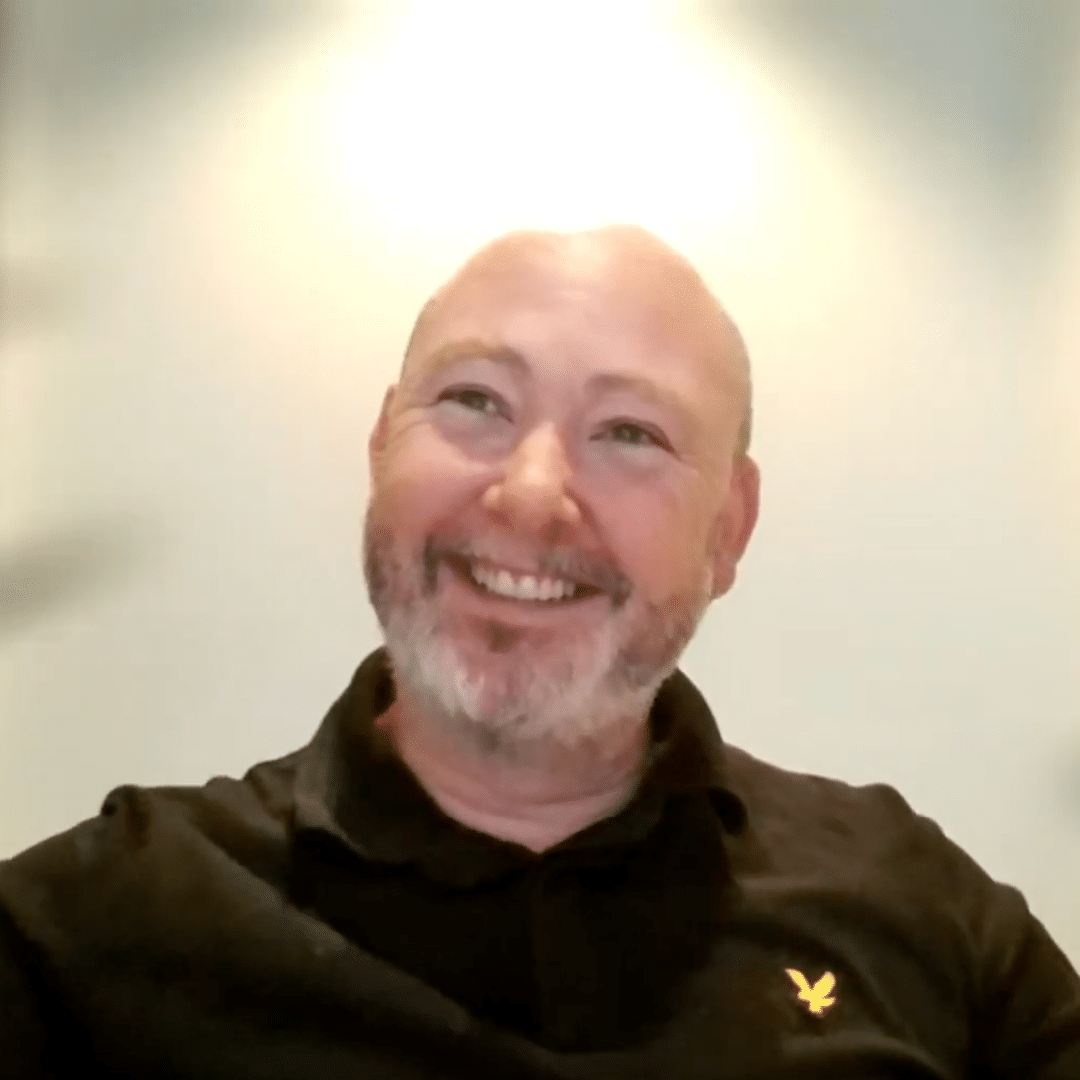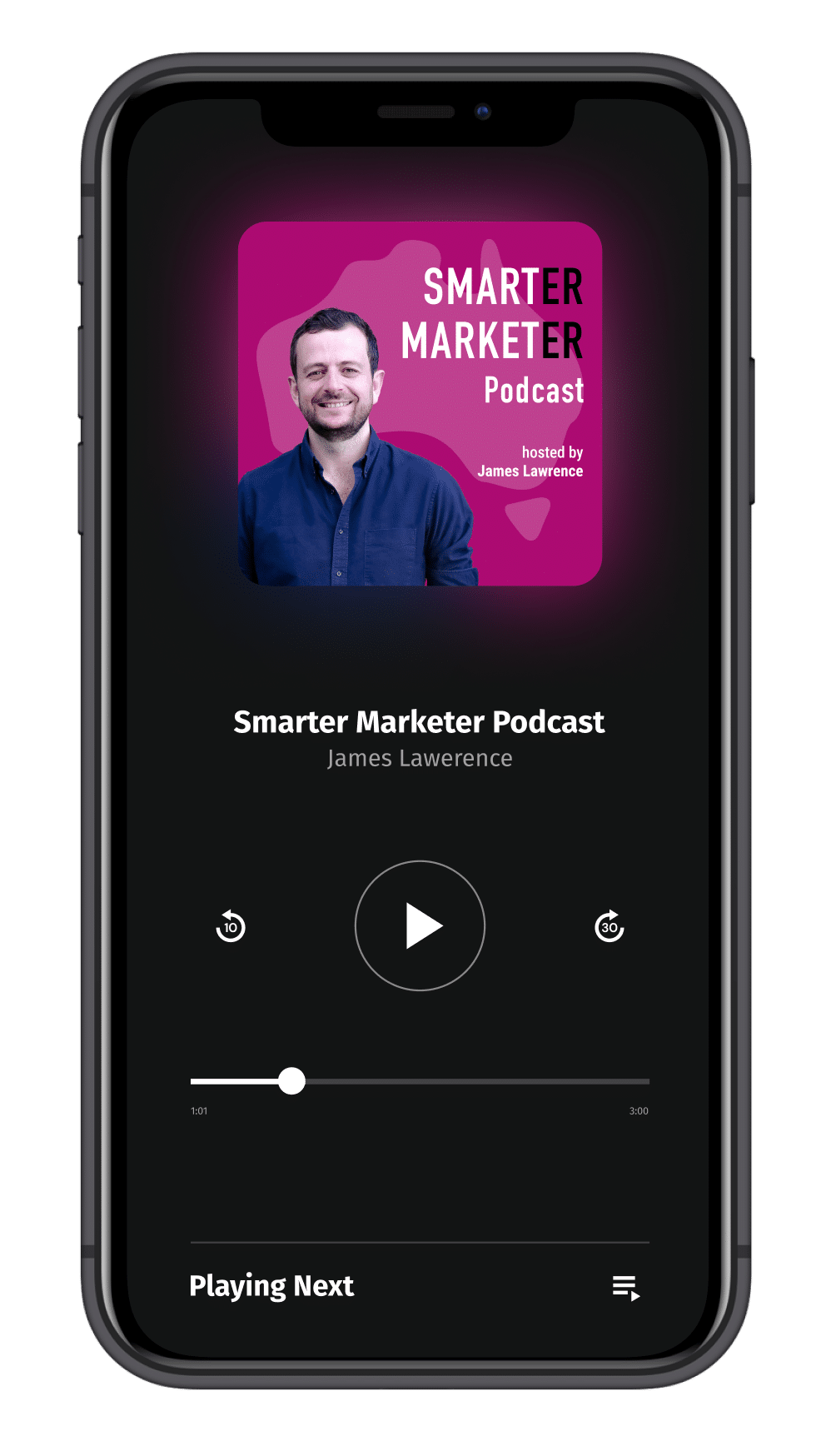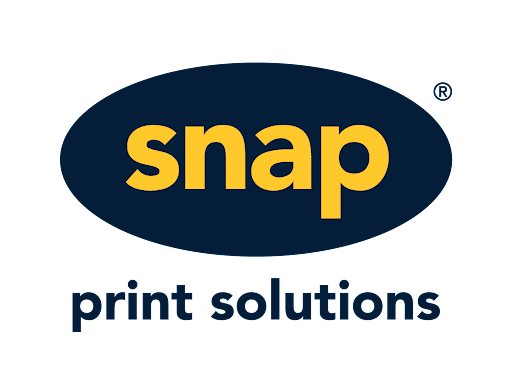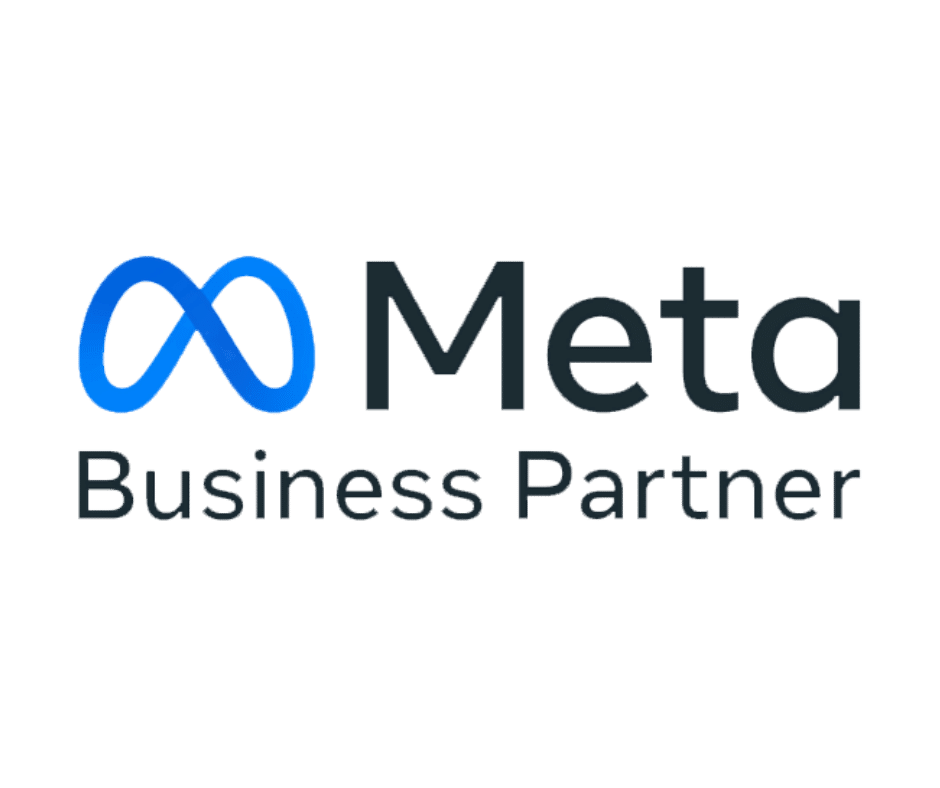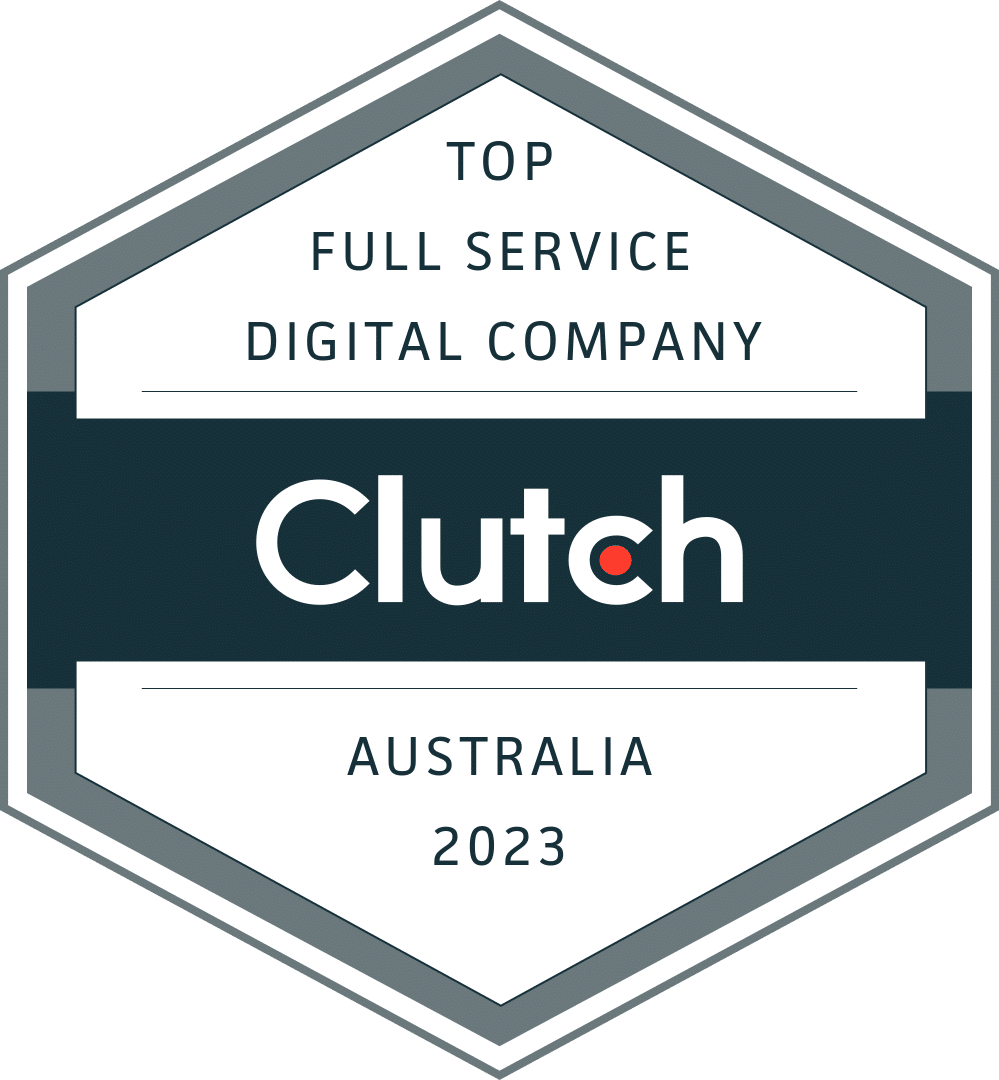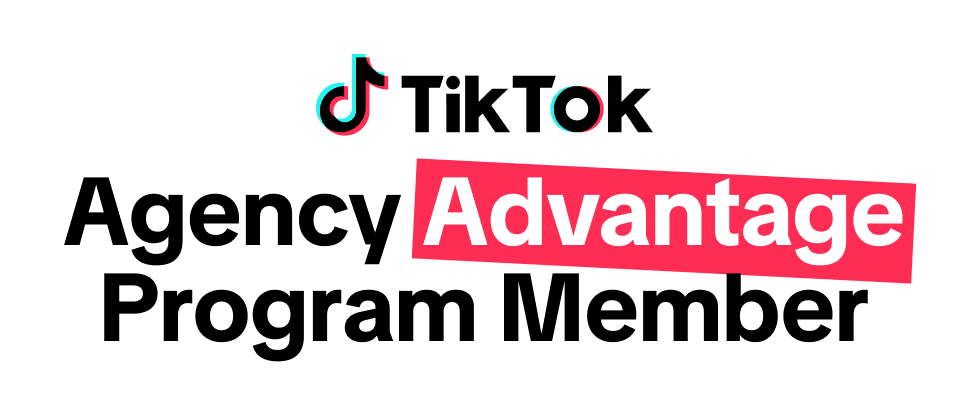Marketing for Turbulent Times: Kantar and the Australian Marketing Landscape
Episode Description:
Marketing in 2025 is being shaped by what some experts call a 'polycrisis' - disruption layered upon disruption. From global conflicts to inflation to AI-driven job shifts, the market conditions facing both brands and consumers are becoming more complex and unpredictable. For marketers, the challenge isn’t just keeping up; it’s finding ways to cut through the noise and still build for the long term.
In this episode of Smarter Marketer, Host James Lawrence (Co-Founder, Rocket Agency) speaks with Dan Robertson-Jones (Partner, Kantar) about the findings from Kantar’s recent report on marketing effectiveness in Australia. They discuss the pressures driving short-term thinking, the impact of brand erosion, why creative quality matters more than most marketers realise and how consumer behaviour is changing as 'sameness' floods the markets.
Whether you’re a CMO navigating budget scrutiny or a marketer trying to align brand and performance, this conversation offers a clear-eyed view of where marketing is heading and how to adapt.
Key Takeaways:
- Why Australian marketers are facing mounting pressure to prove short-term ROI
- The risks of over-indexing on performance marketing
- How consumers are reshaping brand relationships as economies face stress from the polycrisis
- The drop in meaningfully different brands over the past decade, and what’s driving it
- How the “sea of sameness” in creative is eroding the effectiveness of marketing
- Why cultural relevance is key to standing out
- Why consistency across touchpoints is harder now, and how measurement systems can bridge short and long-term goals
- The importance of boldness and foresight for growth in a volatile market
Read the report here: Marketing Effectiveness Hub
Meet James Lawrence
Host, Smarter Marketer Podcast
Co-Founder of multi-award-winning Australian digital marketing agency Rocket, keynote speaker, host of Apple #1 Marketing Podcast, Smarter Marketer, and B&T Marketer of the Year Finalist.
James’ 15-year marketing career working with more than 500 in-house marketing teams and two decades of experience building one of Australia's top independent agencies inspired the release of Smarter Marketer in 2022, the definitive podcast for Australian marketers. The show brings together leading marketers, business leaders and thinkers to share the strategies that actually move the needle.
Each episode offers candid conversations, hard-won lessons and practical insights you can apply straight away.










James has delivered keynotes at:
Dan Robertson-Jones
Partner, Kantar
About the Guest
Dan Robertson-Jones is a Partner at Kantar, one of the world’s leading marketing data and analytics companies. With over two decades of experience in strategic marketing research, Dan helps brands navigate disruption and decode shifting consumer behaviour.
You can follow Dan on LinkedIn.
Transcript
James Lawrence: Welcome back to the Smarter Marketer Podcast. I'm here today with Dan Robertson Jones. Dan, welcome to the pod.
Dan Robertson-Jones: Thanks very much for having me.
James Lawrence: Looking forward to today's conversation. So Dan is a Partner at Kantar, essentially one of the world's leading marketing data and analytics companies. I think you've got presence in over 90 countries around the world, 33,000 employees. It's a huge organisation, a very interesting business. Dan works here at ANZ as a Partner working in culture, futures and strategy. You've got over two decades of experience yourself in the kind of market and marketing research space. Over the years we've worked together on a few mutual clients. Your recent report on marketing effectiveness came across my desk, thought it'd be a great topic to anchor a conversation around on the pod. So Dan, I think it'd be good just to get some background on the report itself. How often does it get commissioned?
Is this the first one? Does it happen every year? What's the process there?
Dan Robertson-Jones: Yeah. Perfect. So. It's, it is not a regular report, but one that we felt was important to do given some of the signals we were coming through , in some of the other DAF sets that Kantar has that you mentioned.
So, everyone, there's nobody in the marketing industry in Australia or beyond who will not recognize the pressure that is being put on marketers and the increasing challenges of successfully navigating people through the conversion funnel.
So we were hearing it , from clients. We were seeing warning signs in the data and off the back of a one off piece, , that was run in the UK and the US by our Kantar counterparts. , We translated that study into to Australia. So the core of , the work really was talking , to our client network, both kind of CMOs who we work with and senior marketeers , and asking them to,
do a piece of research with us to understand where is Australian marketing at and how do we put some hard metrics around what we're seeing anecdotally and in other sources of data to understand how well we're operating at where the pinch points are and where the challenges are thinking about for marketing
James Lawrence: It's awesome. , A lot of the listeners to the pod are in-house marketers and often by almost the definition of being in-house, you're siloed, right?
You're working in your business with your team and depending if you're in business groups and gonna conferences and whatever it might be, listening to things like this, it can be really hard to know other challenges that I'm having, , particular to me in my organization, or are they being felt in my industry?
Are they being felt by, , all marketers across different industry. So, and often, even if you do get some benchmarking data, often it's not Australian, right? You're often getting data that's coming outta North America, coming outta the uk. So I think so awesome to have a piece that is for the needs and challenges of Australian marketers,
Dan Robertson-Jones: yeah, everyone really, since the advent of the pandemic has been asked to do more with less, we've all been finding ways , to get through. It's completely natural in that environment that we are spending more time looking at our category, more time looking inwards, , are not just being siloed from other people in the industry, but being siloed from the scale of what is happening in markets.
James Lawrence: Mm-hmm.
Dan Robertson-Jones: , As I say, we're being asked to do as an industry. The pressure from pressure internally to deliver, , , to meet the month, to meet the week, to meet the quarter creates a certain level of, requires a certain level of focus.
James Lawrence: Mm-hmm. So
Dan Robertson-Jones: taking a step back. Being able to see the bigger picture. As you say, James, that is the true picture of what's actually going on in the industry in Australia to understand where are we at
James Lawrence: yeah. , It's a good perspective. , The first page, , it's a term I've never heard before, but the first page of the report talks about a poly crisis.
We're living in a follow crisis. That's a nice place to start the conversation about the actual findings in the report
Dan Robertson-Jones: yeah. Perfect. So , it's termed by, , Columbia Professor of History called Adam Ts.
, The idea is that we are experiencing disruption on top of disruption. On top of disruption. , We've been through the pandemic, then there was inflationary concerns, then there was global conflicts. , We hit a cost of living crisis. This year Australia Day wasn't a great day for marketing , with the announcement of the of Trump's tariffs.
Last month, we saw Mark Zuckerberg promised to make 90% of marketing jobs redundant through ai. . The point of all of that being without wanting to dwell in the negative, is that one thing on top of another, on top of another, on top of another impacts the industry, impacts clients world, but it also impacts consumers world. So there's a brilliant, , study that Gallup published every year called the Global Emotions Poll. , At a global level it shows that negative emotions are increasing and have been increasing, but a spiking increase in the years since the pandemic.
. And that's super powerful. I think I'm right in saying, and I'm pulling this from memory, that within that report , we are certainly more stressed or we experience stress more than Ukraine.
Which is interesting. And, , we are less happy than the whinging palms as a nation. So you can see it not only means that our world is more uncertain, but the markets that we, the consumers that we have been used to engaging with our experiencing the same impact as us. And what that in effect means, and the power of that strength of that, frankly, , is driving wide scale behavioral change.
So , we developed a model to try and encapsulate this, what we were seeing in markets and consumer attitude and behavior. We call it the control alt, delete model. And the idea is people are looking fundamentally for more control in their lives
James Lawrence: mm-hmm.
Dan Robertson-Jones: To do it. They're open to deleting existing things in their lives, habits, attitudes, relationships with brands that they don't want anymore.
And they are more open than ever to adopting new alternatives, which . Essentially means, we have moved out of an era of great moderation of, as economists we talk about, of predictable markets. And we're moving into an era where consumer behavior is less predictable than it used to be.
And keeping up with it becomes more important for grace.
James Lawrence: Hmm. , It's so interesting, isn't it? And I remember during the pandemic, and I think we don't wanna talk about the pandemic too much, it's been done, but it was fascinating looking at Maslow's hierarchy of needs. And yes, we just saw that the things that consumers were interested in consuming.
And then fast forward six months, everything had been knocked down a peg. Right? When you have all this uncertainty in your life, your focus on what's important changes, right? Yeah. And therefore, you're purchasing decisions similarly. So,
Dan Robertson-Jones: yeah,
I would absolutely agree. I think you know the, you could see there's a brilliant study that was published. It was actual work was conducted in the weekend. I think it was late February, late March. The pandemic was here. We were a week off closing borders.
We were fighting in the aisles of supermarkets over toilet paper, and 62% of Australians said that they felt COVID was the reset. We needed to reevaluate how we were living.
James Lawrence: Mm-hmm. I always
Dan Robertson-Jones: say that you saw a short term. I completely agree with what you're saying, James. You saw a short term flight towards safety, but what you actually also saw was decades worth of change in consumer attitudes and behaviors and relationships with brands and products moving decades of change in the space of months.
Now, that's slowed down, but if you look forward to the end of the decade. The poly crisis isn't going anywhere.
James Lawrence: Mm.
Dan Robertson-Jones: And all we're gonna see is the speed of change accelerate through , to 2030. , And that's both challenging opportunity. , It does make for more challenging context in understanding consumers and understanding what's important to them and connecting with them through marketing.
, But it also means if you can crack it, then
you have a head start on competitors.
James Lawrence: As with every ch, every, every kind of, um, and every challenge opportunity. And it's just true, right? In business and, and in marketing, the report itself, um. It's framed around marketing effectiveness.
Yes. I guess like maybe if we could just, I think most marketers will have an understanding of that, but maybe just , a quick definition for those that don't. But I think just like how, , those concepts come together, right? Marketing effectiveness and also this poly crisis and this pressure on marketers to, deliver in a way that maybe we haven't had to in the past.
Yeah, , the one thing that hasn't changed through all of this is the principles of marketing. , And , you still need a well positioned brand and portfolio attuned to the consumer. To build meaning, difference and difference as we would talk about it, but ultimately to drive penetration and penetration at the price point you want.
That's still obviously there. , There is still, , the operationalization of that across how do you win before shelf create kile. Language is predisposition, but how do you create awareness , and purchase intent? How do you win at shelf? And then how do you win after shelf and how do you do that in the most cost effective way?
That's how we think of marketing effectiveness and how we frame it. , The challenge is then how do you adapt to the market in order to make sure, and frankly, as you mentioned James, to the commercial pressure. On marketers in terms of short term sales to ensure that you're also building through the pipe and not compromising on , the ability of your brand to be able to maintain margin in market.
Mm-hmm. And that's really where marketing's getting squeezed.
Yeah. And, , what are you seeing out there? , We hear a lot from our clients around having to probably demonstrate return, demonstrate value more than ever before. Um, had Darren Woolley on , a few weeks back, talking about the state of the pitch over the last 12 months and Mm.
Seeing a lot of, , pitches involving senior stakeholders that once wouldn't have been involved in marketing pitches. So CEOs and , other senior stakeholders with probably a more careful eye being. Placed on marketing spend , and what kind of return can be expected. And , we'll often see during tougher times, clients coming to us with more of a performance focus like we do, you know, we're a digital agency, right?
So we do a lot of performance marketing, but we're also huge believers in brand building. And, , the long and the short of it. , But it feels to me that there's probably more pressure on marketers, generally speaking. Obviously there's always gonna be, , more pressure to demonstrate short term value. , Is that how you guys would be seeing it as well? I think ,
Dan Robertson-Jones: the short of it , is a much more tangible, real, and frequent. , , your comment around having CEOs in pitches , is absolutely something that we have heard as well or seen as well.
, The pressure for that efficacy to be demonstrated , in short term sales and conversions is natural. And, , that is the reality of the market. We're seeing the ability to activate and commercialize work quickly.
, All of which makes lots of sense when you put it into the context of consumers being consumer spending patterns changing.
, The propensity to spend on big ticket items, luxury items, travel, et cetera, , is declined significantly in the data that we've seen over the last couple of years that , we do monitor , on a regular basis. And if you think of it from a consumer point of view, every generation of Australians at the moment is looking for a greater sense of order in their lives.
So when the world feels outta control and the poly crisis, I look for control and order in my world and I sense to optimism and I will spend on those things. So there is more competition for a smaller Perth at a national level.
James Lawrence: It's interesting. , When you're working with your clients, 'cause , you're dealing a lot with marketers, but you're getting exposed to broader stakeholders in organizations.
Like it's logical, right? , Every dollar you spend should always be scrutinized. And , is it likely to drive value, whether it's short term or long term? , We're not in the business of spending money, , in a flippant way, , but when it's more scrutinized than ever.
And my, I think most marketers would generally agree that most marketers will generally buy into the long and the short of it. They'll understand the importance of developing brand and building brand over time. And that long term, , the return on investment will be better. How do you see the best marketers dealing with that pressure in their businesses?
, What are the things that they do to best push back to best educate, to , prevent that business from making bad decisions, right? From trying to start pushing everything into short form marketing that is actually probably gonna rob, , two x three x sales in the future.
Dan Robertson-Jones: You have to be able to draw the, red thread through everything you're doing. So if you are not, clear on your positioning, on your value proposition, and I think the more value proposition almost than positioning, like, what is it, where is the value in market? And how are you meeting it than, , that's the biggest red flag, but they're clear on actually not just the positioning and how they activate the brand, but then , how does that translate into what people want to buy and how that's moving?
So . Using your inside agencies, using , your agency partners to understand where stuff is shifting, where it's moving towards advise you time. So I think we're seeing more foresight and forecasting coming through to meet that. , And then an ability to manage the long and the short of it through how you're testing what you're testing.
So you need to, meet the pressure to deliver on , that short term, but to make sure that you are doing it in a way that also pays back to the brand and , builds loyalty.
James Lawrence: And , what are the different ways that you, because I presume in that instance you've got senior stakeholder buy-in , that.
For the longer term staff, , we've sold in that it is valuable. We've got buyin there. What are the practical ways that you are measuring that, , to demonstrate that? Yeah, like it might not be driving sales today, but , we're doing our job and we're setting up the business well for the future.
Dan Robertson-Jones: So Kantar, we have, , the MDS frameworks and meaning difference in salience. , And , that metric runs through, everything we're doing. So if you're testing creative, if you're testing innovation, if you're testing, , brand execution, then your understanding not just long term and short term sales impact, but actually is it paying back to the brand and not taking your eye off that ball and making it simple, not just to measure that, but to.
Communicate that within the business so that you can balance the conversation at a board level. Yeah. With the conversation within the marketing team. And I think there is a real challenge of keeping teams aligned on that and making sure that you are creating consistency in , the ROI that comes with that and the brand building effects that come with it across what you do.
James Lawrence: Yeah. So those kind of metrics being reported on whatever the timeframe is, right? Quarterly or monthly or yearly?
Dan Robertson-Jones: Well, , if you're doing creative testing and you're turning it around in six hours, , I think more than ever you need a system.
Like I said, a red thread that can run through everything you're doing in a system that can connect things. So you're managing to balance the long term and the short term. Otherwise you need an anchor. I think you need an anchor and a buffer. Now the buffer is from the work we did. There's a really clear kind of indication that the more you are focused on performance marketing at the bottom of the funnel, the more you will spend and the more you perform, actual commercial performance will decline.
So you get into a vicious cycle with that. You, that's obviously , the risk. , But you need , a system that can allow you to manage the brand whilst manage commercial performance. And look at where agency partnerships are going and being able to provide that system and do it at pace so you are able to not just manage.
Whichever of the marketing levers you're looking at, but you're understanding, how does that systemically link back , to what you need to do to maintain long-term performance?
James Lawrence: There's a breakout stat in the report.
, I'll read it now. , The shift of performance marketing is already eroding brand performance in Australia, 51%, , drop in highly meaningfully different brands today than 10 years ago, which is,
Dan Robertson-Jones: yeah, , it's a standout stat. There's a couple of them when you start to look through creative performance as well, particularly, but , we did not expect to find that level of brand erosion.
You say it's come from a different data sources from our Brand Z database, but I think there's two things going on. We are being pressured, but also consumers are moving and consumer perception of brands. The role of brands and their relationship with brands has also shifted, and that's not just pre the pandemic.
Mm-hmm. So once upon a time, certainly when I first started work, brands were something people ran towards. Mm-hmm. So was a bastion American call the gap. , They were a beacon that you ran towards Really high performing brands today are really clear on where they fit into people's lives and where they build value in people's lives.
James Lawrence: Mm-hmm.
Dan Robertson-Jones: But these two pressures in the , consumers are shifting. You've gotta keep up with them. , Otherwise you are effectively dropping out of the top of the funnel and then turning up, spending more to compete at the bottom of the funnel.
James Lawrence: Yeah. That's it.
Dan Robertson-Jones: The ability to, to maintain margin is compromised.
James Lawrence: And the power of brand is still there, isn't it? It's just a different way that consumers interact , with brands and with companies and what expectations are, and , it's fragmented and different. , And it's funny, like I would say , that my first 15 years in his industry was firmly in performance marketing.
Right? , We didn't always call ourselves that. We definitely did for a really long period. And it was a kind of pretty easy pitch , in many ways, it was very much, . I don't know which half of my marketing budget's wasted, , I just know that half of it is, and it's like, well, we've got the answer to that.
It's dollar in dollar out marketing and what we can, you know, , give me 30 grand and I'll spin up Google AdWords and I'll generate you, , a thousand clicks and a hundred leads. And if those, if the sales from the a hundred leads is more than the investment, then we'll two exit the next month.
And to some extent, that worked. , And, digital changed to the landscape , as we know, but a hundred percent very firmly, , five to 10 years ago were like, hang on , this brand thing does play a role. , And, , we've worked together , on a few yes client campaigns.
And in both of those, , it is hand on heart true that the clients that invest in brand, that have strong brands, that are well regarded, they're, , deeply connected into the marketplace, they will always get better. Performance in digital channels. We can call them performance channels if we want, but you'll get better performance in Google.
You'll get better performance in social. , And , we do a lot of work in B2B and it is just the reality of it. You things that used to be able to be measured in digital can no longer be measured. And it's messy and it's not a, and I believe in the funnel, but the funnel is not linear. , It depends on what you're selling and who you're selling it to.
And so , the world has changed. Right. And I think it is. How do you get that balance right between your kind of performance activities and your brand?
Dan Robertson-Jones: I think
the more you are able to integrate the different elements of this, otherwise stuff naturally pressure is gonna push stuff out and , it becomes a much more challenging. Job.
James Lawrence: Mm.
Dan Robertson-Jones: But to be able , to link everything.
Is it playing back to your brand? Is it getting you value for money? Is it delivering? Is it going to deliver the kind of growth short term and long term that you're looking for commercially, , through everything? And to have , the alignment of team and partners to be able to move quickly and move consistently, because I think that's the great challenge.
The challenge is like just the consistency of what you're doing , is more difficult to bring consistency across activations today than it ever has been.
James Lawrence: Yep. And we see , where we're playing in digital. , The way you'd be able to run a campaign five years ago versus now with what TikTok will look like compared to what Facebook will look like, to what YouTube looks like to landing page experience.
, It's hard man. Like , it's much more challenging. A hundred percent. ,
Dan Robertson-Jones: To some degree the solve for this is to, is consumer centricity is counterintuitively to solve for this 'cause if you understand where you turn up in people's lives, then you can start to address, to understand where and how do you start to build affinity. , The middle of markets was traditionally the safe place. , Sometimes you traded down to value. And sometimes you bought premium.
James Lawrence: Mm-hmm.
Dan Robertson-Jones: What in effect has happened, and to go back to your 51% stat, is that we've had to take value because of particularly FMCG, , brands have needed to take price.
, And that's offset the balance. It's the price that's offset the balance in the brand. So suddenly , you are cashing in equity effectively in your brand. Mm-hmm. And at some point that snaps,
James Lawrence: we've
Dan Robertson-Jones: out with a couple of clients here. We've seen it around the rest of the world. , And it snaps when clients, when consumers buy the value product and find that it's not worth paying the price premium.
So what used to be the middle used to be safe. Now we talk about the middle being really messy and really dangerous. 'cause , it's the space where consumers are increasingly buying the best value. The best. And there are certain things I'll trade up for, and that obviously varies by category.
James Lawrence: Mm-hmm.
Dan Robertson-Jones: And some things where I'll find stuff that works.
So that shifted. , The nature to your point of influence and how do you actually make fundamentally run the pistons of influence, right? How do you influence people's decisions in a world where people are drowning in content?
James Lawrence: That could be , an excellent segue to where I wanted to steer the conversation.
Okay. You couldn't have, you couldn't have set that up any better. Dan, we, we should be doing this more often. The second core part , of the report talking about creative, um, yeah. Creative is hugely impactful. Delivering a 4.7 times return on marketing investment. Creative quality can drive as much as 30% higher volume from the same media pressure If you want to generate profit, effective ads are more likely to lead, to increase in return on marketing investment.
, It'd be good to talk about that. Something that we're trying to educate our clients on more. , As an agency, we've, , taken huge steps in the last kind of three, four years to build out our creative offering. , We saw for our clients that, , those that had awesome, creative, got, , three x five x, 10 x performance over those that didn't.
It's a no brainer. , I've seen other stats around, . I think the one I've sent, I can't remember who they published, but it was like 56, you kind of leave us in terms of, , go to market creative was like 56% in terms of the impact. I think, , brand was like 15 and then placement was 12 or something, or 15 or something like that.
But yeah, it'd be good just to talk about , the findings and the report. Like , what's the outlook on creative , and how are you measuring this stuff?
Dan Robertson-Jones: So I think just , to build on the point that , you were saying James, for anyone familiar with the cost of dull, one of the findings , from this work is that Australia is experiencing the same challenge with cut through in terms of creative, when we looked at our link database, , over the last two years, there's a 50 percentage point decline in involvement. , less than 50% ads are differentiating a 40% decline in the ability of ads to generate demand power, volume in more simple language and volume growth. , It is a sea of sameness, which is not surprising when you think about the fact that we look at the same amount of information in a day to day as people used to in a lifetime.
In the year 1500. We are overwhelmed with stuff and the context of everything else we've spoken about, it's more noise and actually cutting through that becomes not just more challenging, but more important you look at building salience.
Creative excellence is the biggest driver bigger than reach, bigger than frequency, bigger than media synergies. , Can you unpack salience , for marketers that Yeah. Perfect. Might, might not use the term so top of mind, you come to mind
James Lawrence: when
Dan Robertson-Jones: I have the need.
James Lawrence: When I say, uh, soft drink, you say coke. Yeah. And hamburgers and,
Dan Robertson-Jones: yeah, exactly right. Exactly right. So, it's a question of how prevalent you are in consumer thinking in the moment where they need and will purchase you. Creative quality is, I thought this was an interesting little step, but creative quality is the second biggest factor.
It matters more than most marketers think. Mm-hmm. I guess second biggest driver of advertising profitability behind brand size. Marketers tend to rank it. Quite a bit lower than that. Fourth, fifth, sixth, but you know, bigger than budget saying cross geographies or portfolios bigger than multimedia.
So if there's one thing that you want to get right, it's your creative.
James Lawrence: Um, and it's so often an afterthought, right?
Dan Robertson-Jones: I think it is, it is. You know, I think incorrectly, right? Well,
We tend to think about a creative as test and go
James Lawrence: mm-hmm.
Dan Robertson-Jones: You know, it's almost a traffic lighted system. , If you think about it as a process of optimization. Now, , there's loads of AI tools that can help you with this. Kantar has them, lots of agencies has, and they are a cheap and cost effective way of making sure that the ideas you are, 'cause the ideas you, in a more competitive market where people have less emotional headspace, if you aren't turning up in my world in a way that I recognize and that is resonant with my world, your chances of coming through are reduced dramatically.
So we did a piece of work last year with NewsCorp is , on , their thought leadership site really to unpick , how has influence changed and what does effective influence look like? And the biggest factor, consistently, both at a cultural level and across four verticals across all generations.
Genders of geographies is , do you get me affinity? Are you like me and do I now effectively the consumer has to let you in and the best way to be let in is to turn up in a way that recognizes them in their world.
James Lawrence: Mm-hmm.
Dan Robertson-Jones: So I think, you look at a brand like all these multivitamins who I think have done an incredible job of understanding shifts in culture and health and wellbeing.
, They've innovated the product to not be a pill that you take and wash down with water and you forget, but to be an experience. It's chewy, it's flavored. I'm doing something good for myself and I'm heightening the experience of it. And they talk specifically, do you need more sleep?
Do you need more energy? Do you need more focus? Do you need more libido? So they're talking in really culturally relevant language and the way they turn up in communications and the way they turn up on shelf talks directly to a different way of thinking about health than the category traditionally has done as a pharmaceutical category.
Yeah. . It's not just the creative, but across the touch points. They, because they un they are attuned to the category, they're more meaningful to people because they know how to break category conventions in products, in advertising and packaging. They're more differentiated, therefore they stand out more.
Yeah. More creative. And you're more present on shelf. So I don't think the principles of any of this stuff have changed.
James Lawrence: Well it's just like as you're talking, right, I'm just thinking like, to be a great marketer, you have to understand the market. Right. You have to understand your customer.
Yeah. And that's been true forever. And I, you know, Richon would be great. Marketing starts with research, right? Yeah. It's, um, and you know,
Dan Robertson-Jones: you need to understand that. I think the shift in it is that once upon a time you needed to understand your category. How consumers came into your category now. 'cause consumers relationship, people's relationship with brand has changed.
Brand is everywhere. Everyone has a personal brand. You
James Lawrence: know, we've all got a podcast
Dan Robertson-Jones: defines of James. But , you've gotta understand consumers in the context of culture, not in the context of your category. , And then when you understand where you are useful and where you will become more useful into the future and the semiotic and semantic language that consumers use to talk about the need that you can fill, you can talk their language and , selectively where to break category conventions.
I think with all of this stuff, just to go back to your point, it means that that's hard to get right the first time around and it places greater importance on using consumer. Input as you go through a creative development process and through the whole process from early ideas through to testing the go to market execution and understanding where and how it's turn up, what does your campaign calculator look like?
Becomes much more important. 'cause if you aren't precisely right, your noise mm-hmm. So it's more challenging. The principles haven't changed. I think what you have to look to understand is more challenging, , but it gives you the more power to be able to drive the cut through and the salience and the impact and the ROI that you're ultimately looking for.
James Lawrence: A hundred percent. I was in a session the other day and to your point before, , about humans having to process more information in a day than we would have in a lifetime, you know, 700 years ago. It was down to like two and a half percent or something like that.
But we actually even look at and commit to the advertisement that we're seeing and misattribution because we have got this kind of race towards conformity and race towards safety and playing in the middle , that we, misattribute advertising.
To us, to the category leader, right? So to exactly what you said before, right? When, when, if you're, if you catch the end of a a TV ad about burgers, you're probably thinking it's McDonald's. If you catch the end of a soft, you're sitting there cooking and you hear a soft drink ad you just presume it's another Coke ad.
And so there is this importance of standing out and being distinctive and being consistent with that. And
Dan Robertson-Jones: I think that's the hardest , there is not safety in the herd anymore. You have to be bold, , to anchor that boldness. You have to understand, as I say, the context of culture as opposed to consumers where consumers step into your category.
, I'm not saying you don't need, , a path to purchase, but your foundation needs to be understanding where you bring value into people's lives, not how you bring people into your brand. , There's a flip side. I mean, , it's great news if you're an incumbent, right?
But I think if you look at, if you are, those rules are changing as well. You know, first mover advantage doesn't buy what it used to unless you keep innovating. There is a contextual collapse as vice. Would you talk about it between, , categories are not as discreet in consumer's minds. They never have been as discreet as we like to think about 'em as being, but they are more interrelated than they ever can be.
If I can get better sleep through an app or a multivitamin or thing X thing y an AI powered mattress, then they're all options. I'm buying the same need, but I'm shopping across more categories.
James Lawrence: Mm-hmm.
Dan Robertson-Jones: , So speed of response and accuracy of response become more important than ever. And I think , that's where understanding the context you operate in, being able to talk that language.
Knowing where and how to turn up most effectively to build a presence in people's worlds so that , , you are sought rather than chosen, if that makes sense.
James Lawrence: Yeah. Massively more important. Yeah. Which then does tie into , the theory behind the long and the short of it, and the ability to charge a price premium and the fact that you will, , have a higher close rate if you have developed in your terminology salience and in the mind , of the customer.
, The deck itself, the rapport, it talks about the three imperatives for measurement. Number one, what gets measured gets done. Number two, it's return on investment, not on, not return on spend. Um, and I, the three tied a little bit into the first one, but more and better measurement tools than ever.
We just need to use them. What are you seeing out there , with, , maybe not even just your. Customer base, but more broadly as it relates to measurement and for marketers listening, like what are the pitfalls , to avoid and , how to get that measurement framework happening.
Yeah.
Dan Robertson-Jones: AI has only brought more tools into this world, and as generative AI starts , to impact the ability to use synthetic data to turn things around more quickly becomes both more cost effective from a marketer, marketer's point of view, , and more nimble.
, obviously no one at the moment has immeasurable budget, but cost effective high speed turnaround options are. Are increasingly becoming a norm, , in the agency toolkit for clients?
The biggest danger goes back to what I was saying before. If you are using sets of tools that don't lock into a system or a platform, your system, frankly Mm.
, You run the risk of not being able to manage at pace effectively. Mm-hmm. So for us, as I say, that's MDS. Everyone has a different model of how you're measuring the brand, how you're measuring performance against, standard. If you take creative, the kind of standard metrics that you would have in terms of , relevance, comprehension, likability, et cetera, et cetera.
, But you need to demand more than that and more than just understanding ROI, short term, long term sales lifts impact on brand, you need to be measuring at every touch point. 'cause consistency is motor. As I say, it's the most challenging thing in the environment today. If you don't, I think it makes your job a lot more complicated because you're having to make leaps and slower, , without being able to have the data to make informed decision, it also makes the job of managing teams, of creating consistency of messaging up and down in businesses, much more challenging. 'cause you, there is a job to reestablish its place. Marketing's job has always been the strategic partner for growth rise.
We market from historically like consumers. I think everybody inside the kind of businesses that have marketing functions have less time, they're more stressed, their attention is compromised. So repetition internally, we're doing this, this, this, this.
James Lawrence: Mm-hmm.
Dan Robertson-Jones: Here's how we're measuring that here, or here's the performance around this here makes, is vital to getting marketing's proper place as the strategic growth advisor to businesses back on the table, rather than the danger, an averse danger of becoming the auxiliary to sales.
Yeah.
James Lawrence: That's a good, that's a really good perspective. , Dan, it's been awesome. Discussing the report with you, we will include a link , to the full report , for listeners , that wanna have a read through. I think like second, final question, what would be the kind of biggest takeaway, and it doesn't necessarily have to be a surprise, it's something the biggest takeaway for you out of the report that you would be banging a drum on to have marketers adopt and focus on for themselves if they're trying to do a better job for their organization in the next 12 months.
Dan Robertson-Jones: It's not necessarily in the report, but I'll say two things if I can, James. I think number one disruption is not anything new and I think we as an industry have been, let say. The great moderation as economists would talk about, it ended in t with the nine 11 attacks, , we have been dealing with disruption of one form or another, whether that's web 2.0 or the emergence of influencers or DC channels for two decades.
Yeah. For most of us, that is the overwhelming majority of our working lives. At least half of it for everyone. Right. We're really good at dealing with disruption and adapting to it. What this points to is the need to shift focus and go, right, not just , how do we work around these things, which is what we hear a lot of clients saying.
You know, like a lot of the internal barriers to growth, 93%, 94% of the barriers to growth are internal to businesses. How do you rein? What's the sake of cows? Do you slaughter is kind of my key point with this.
James Lawrence: Mm-hmm.
Dan Robertson-Jones: Certain tools that we have all been trained in that are legacy. What do you let go and actually, what's the system that you need to be able to do this at Pace?
'cause as I say, pace is only gonna increase. We're gonna need to work at the speed of the machine through to the end of the decade. Everything's gonna need to be faster and it's gonna need to be right. , So if there's one thing you do, it's get clear on how does that need to work and what do you then ask of agencies. Does that make sense, James?
James Lawrence: Yeah, a hundred, a hundred percent. And I'm fearful now that my last question might, , have a similar answer, but maybe not., This is a question I ask of all, uh yes people on the pod, which is what's the best bit of career advice that you would give to an Australian marketer?
Cool. It can be anything.
Dan Robertson-Jones: No, I love it. , This is very much my bias, but I think.
Marketing is by its nature about persuasion, entrepreneurial illness, and being bold. It always has been. , It's how the industry invented itself. It's our origins. That mandate is more relevant and more of an imperative today than it ever has been. , Driving growth requires boldness, and , the reality of the marketing world today is that you need the systems that we've been speaking about as we've been going through. So we've gone through this conversation today.
The greatest risk is making this a process driven industry. We exist to move the demand curve to the right, to create a competitive advantage, to see things that others haven't seen. There's a brilliant, , quote by a guy called Mike Maples Jr. Who's the founder of Floodgate Venture Capitalism, , in, , Silicon Valley.
He's the primary investor in, , Airbnb and X amongst others. And I use it quite a lot with clients. , He talks about the role of insight and the role of marketing being the time traveler. So you have to go into the future and see things that other people haven't seen. 'cause if you're looking in the present, chances are you are looking where loads of other people have looked.
, You have to bring that back and hack it but fundamentally understand that the insight defines the market, not the other way around. Our categories are gonna change. You can choose to be the one that changes it or the one that is changed by that change.
So I think it is, not intuitively feel like a time to be bold and to put your head above the paradigm, but having the courage to do so , to embrace new ways of working, to re harness the, I like to put ideas and an entrepreneurial spirit and the willingness to break things, both in terms of how we work and how we go to market at the center of what you do is to reinvigorate the power of what marketing and its best is.
James Lawrence: That's a great response. And yeah, I think Warren Buffett would agree with you, right? , When everyone else is being timid, that is the time to, to be bold, right? It's, , because it runs contrary to human nature and that's , where opportunity sits if you, well, I think now if you don't do it
Dan Robertson-Jones: now, it's gonna be done to you.
Mm-hmm. You know what I mean? You look through, as I said, if you look at the kind of contextual collapse of categories, one question to ask yourself is how do you reframe the business you're in? If you understand where the market has moved towards? Are you still in , the business of soft drinks, or are you in the business of healthy hydro health?
So if you think, , an example of that, if you look at 25% of the , pre and probiotics market in the US is soda.
James Lawrence: Mm-hmm. It's
Dan Robertson-Jones: mind blowing, right? That was category 10 years ago. That was medication and pharmaceutical and a little bit of kombucha.
James Lawrence: Mm-hmm.
Dan Robertson-Jones: That has moved. Getting ahead of it and staying ahead of culture is the most useful thing you can do.
And it's counterintuitive, but having the bravery to do it reaps far stronger rewards for yourself and for the business than looking to stay , in the middle, in the safety of the pack.
James Lawrence: I love it. That's a great way to finish the pod. Thanks for your time. And , as I said earlier, we will include , a link to the report.
Amazing. In the notes. Thank you. Thanks. So you having me. Had a ball. Cheers mate.
